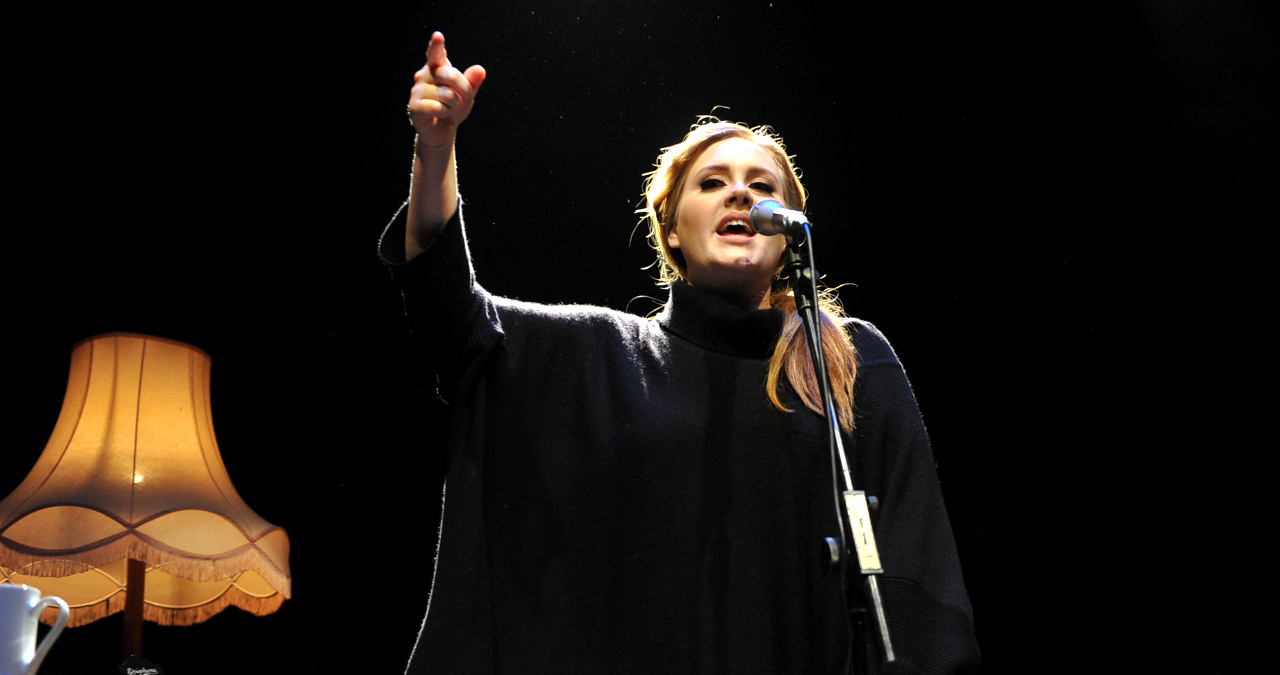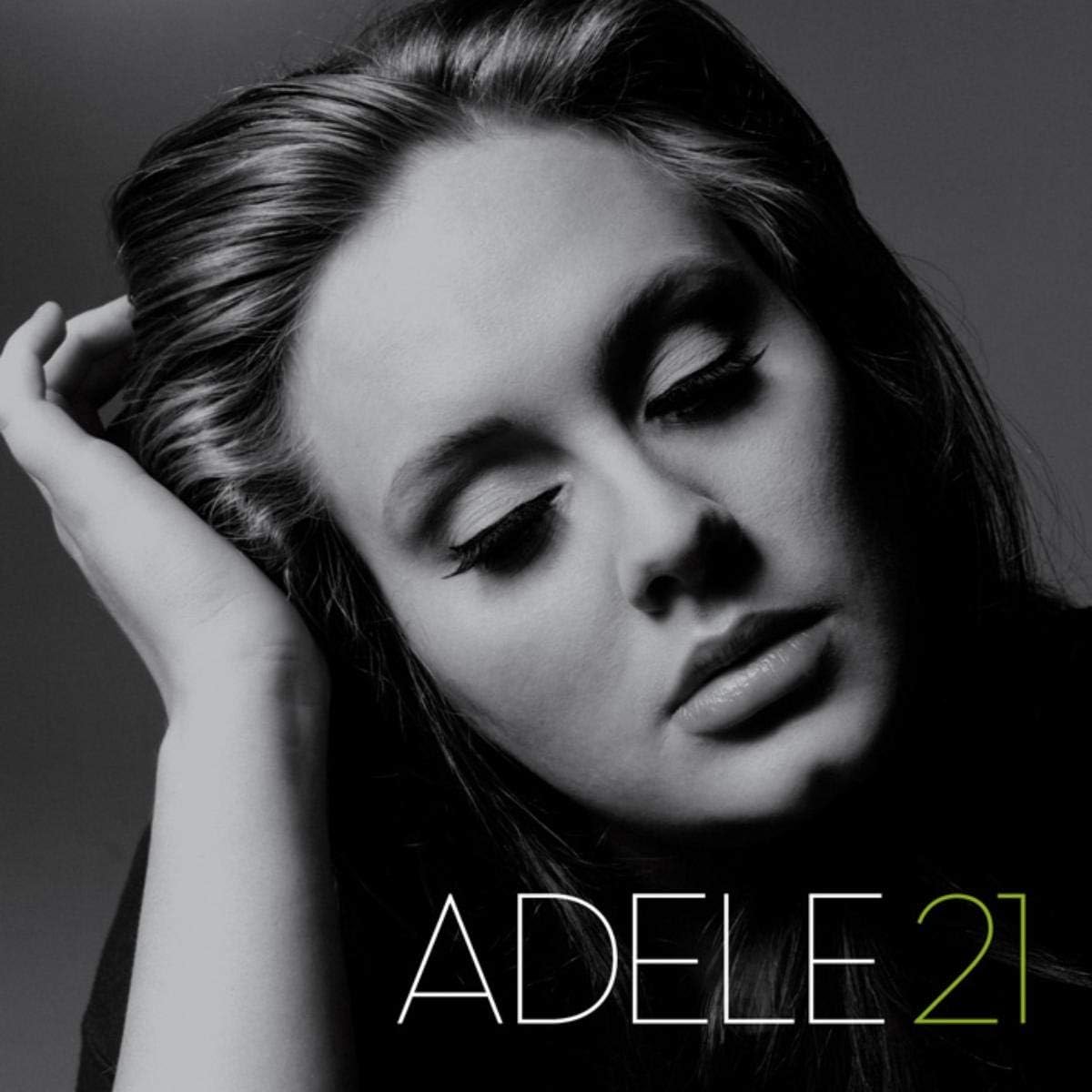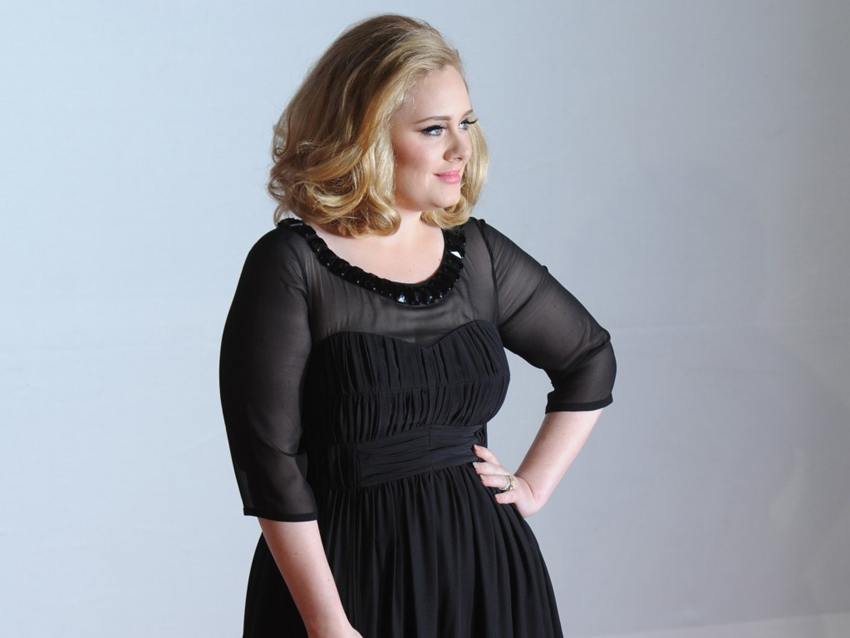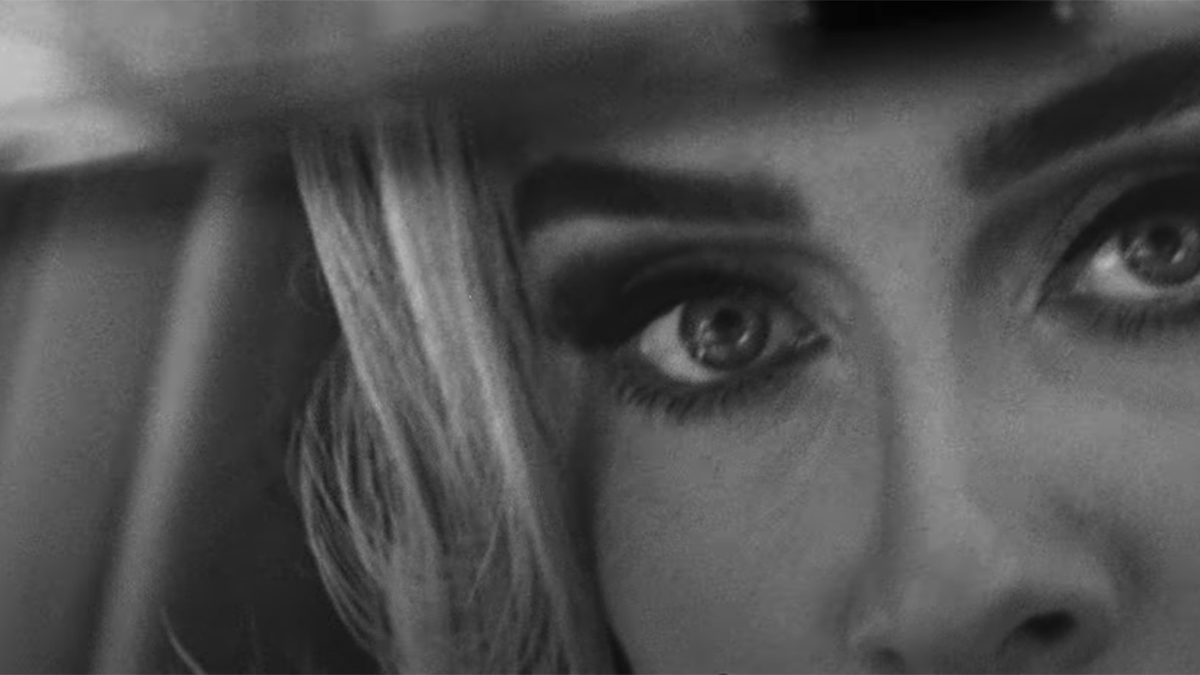“In an age of artifice, media management and manufactured pop stars she’s come through as a breath of fresh air": Inside the making of Adele's seminal second album, 21
What was supposed to be a happy second album went the opposite way, but sold millions because of it

In 2009, just over a year after releasing her debut album, 19, Adele embarked on a follow up - that 'difficult second album' so many artists are faced with, especially if they are lucky enough to have scored so big with their first. And Adele had certainly done that. 19, released in January 2008, went on to shift some 8.5 million copies, plucking Adele from MySpace obscurity to worldwide fame and fortune in a very short space of time.
Her all-new and huge fanbase were hungry for more. With 21, she not only followed it but surpassed it, as the sophomore would go on to sell over 30 million copies and become the biggest selling album of the century. That's quite the rebuttal to the 'difficult second album' myth
But while 21 sealed Adele's status as one of the biggest artists ever, it wasn't as easy a project as all of that sounds. It took multiple producers and co-songwriters, several recording sessions and studios, and many a scrapped re-recording to reach fruition.
Original demos became final tracks, lessons in recording were learnt, emotion and passion became its keys to success, and far from being the joyous follow up to 19 that Adele originally intended, 21 proved that misery can sell.
The album's 11 tracks that detail heartache and relationship angst struck the right chords - the 'sad' black notes on the keyboard being chosen over those jolly white ones. You have to wonder if those 30+ million sales would ever have been rinsed from a 'happy' version of 21. It's unlikely.
Writing the album
The original plan with 21 was not only a more upbeat recording than 19 - mostly because Adele wanted to shake off the 'vintage ballad' image - but that the singer would team up with various songwriters to give the album a different slant and more of a US roots angle, all after she had been introduced to the sound while touring the States for 19.
With a plan in place, Adele approached various writers and producers including Dan Wilson, Paul Epworth, Fraser T Smith and OneRepublic frontman Ryan Tedder, plus Francis 'Eg' White and producer Jim Abbiss with whom she'd worked on 19. Rough demos would be produced and then finished with über producer Rick Rubin at his Shangri-La studios in Malibu, California.
It sounded easy in practice, but the plan was pretty much scuppered from the off when Adele split with her partner just as the writing sessions started. Not only did any 'happy' angle go straight out of the window, but the subsequent raw emotion that Adele channeled into any early recordings was so acute and passionate that the early takes could simply not be bettered, so many of these early demos made it to the final album.
The first session for 21 was with 19 producer Jim Abbiss, but it only resulted in the track Take It All, a ballad that didn't really move the singer on from anything recorded on her debut, so she turned to songwriter and producer Paul Epworth for more inspiration.
Want all the hottest music and gear news, reviews, deals, features and more, direct to your inbox? Sign up here.
“She’s got this incredible intuition about what’s right and what’s real and what suits her,” Epworth told the New York Times in 2015. “She’s the sharpest, most instinctive artist I’ve ever worked with. She’s pure gut, pure intuition.”

And that intuition would come to the fore with the most successful track the duo wrote together, Rolling in the Deep, the opening track on 21.
“I had all these chords I thought would be perfect for her,” Epworth told the NYT in 2012. “She literally sat there with a pen in her hand staring blankly, and then she went, 'I’ve got this riff, this idea,” and she went, [sings] “There’s a fire…” I just grabbed a guitar and quickly tried to figure out what the key was.”
The core of the idea was written over the next 15 minutes and the song completed in just two hours. The finished product - pretty much that demo - ended up number one across the world, sold over 20 million copies, won multiple Grammys, and has had over 2.5 billion views on YouTube. Not a bad writing session, you might say.
Armed with this track and eventually a couple of other Epworth-penned tunes, I'll Be Waiting and He Won't Go, Adele then worked with Fraser T Smith with a similar outcome for the song Set Fire to the Rain, with a demo so good that it found its way onto the finished album.
“We had unsuccessfully tried to re-record the vocal,” Smith told PRS For Music in May 2011, “but in the end we left it; the demo vocal is great. So it was the original demo; the magic was caught during the writing. I think it set the tone for a lot of her record.”
Ryan Tedder would be Adele's next collaborator, resulting in the tracks Turning Tables and Rumour Has It, with the latter becoming a now typical one-take song for Adele, and, yet again, another demo that made it to the album. “The entire vocal took about ten minutes,” Tedder told PRS. “She sang it once top to bottom, pitch perfect, she didn’t miss a note.”
Adele would then work with Canadian record producer Greg Wells on the track One and Only which would be completed with Dan Wilson from the band Semisonic with whom she also later wrote another 21 highlight, Someone Like You.
Before that, though, Adele would meet with Rick Rubin, the plan being for him to take the reins for the rest of 21.
Rick Rubin had first been impressed with Adele after a performance on Saturday Night Live and later met the singer at a Music Cares event where he suggested they work together.
“I didn’t think we’d fit in together at all actually,” Adele told Clash in 2011. “I think it was a challenge for both of us, and I think that’s why we both wanted to do it. It was just too much of a good opportunity to pass up really. He was just so wise. I’ve actually never been so chilled out, being involved in music as I was when I was in Malibu with him and the band.”
Adele recorded four tracks with Rubin that made the final cut, including the Epworth-penned He Won't Go, I'll be Waiting and Don't You Remember, written with Dan Wilson. They also recorded a cover version of The Cure's Lovesong that made the album plus five others that didn't, including I Found a Boy which would appear as a bonus track.
There were re-recordings of many of the early demos that Adele had recorded with the likes of Epworth, Smith and Tedder, but ultimately Adele decided that the raw emotion on the original demos was more important than a polished Rubin recording.
"She doesn't carry any of the baggage of many of today's pop stars,” Rubin told syracuse.com in 2011, “and it truly is about the music first, and her voice and her lyrics, and baring her soul with what she's saying. I would say what she makes is her art, and at no time does it feel like product. She really bared her soul lyrically, and I think that's what resonating with people - the truth in her lyrics, and the passion in which she tells that truth.”
Someone Like You was the last track on 21, and the final one to be written and recorded at Harmony Studio in Hollywood with Dan Wilson.
“She told me she wanted to write a song about her heartbreak,” Wilson recalled to American Songwriter in 2021. “She told me a little bit about the guy who broke up with her, and I think maybe part of my contribution was to help keep the song really simple and direct - very personal.”

Recording 21
We know that Rick Rubin's recording style is very traditional and his approach to recording Adele was to back her with a band and aim for a live feel.
Epworth, however, was aiming for a rawer sound - and often ending with something more vintage - and he would take advantage of plugins for a lot of his productions. In an interview with Universal Audio he detailed several of his approaches when recording Adele.
“All the vocals on the tracks I produced were recorded through the UA 6176, so you can credit Adele’s bright and crystal-clear, dulcet tones to the UA preamp and compressor. In terms of getting a feel for the track, I use the UA Galaxy Tape Echo all the time. The character, noise, and tonality you get on it are all true to the original unit. The UA EMT 140 Plate is one that I use all the time as well. That was responsible for a lot of the vocal tone that was on the original demos with Adele. That sound helped define the aesthetic of the whole album.
“I used the RE-201 as a tape delay and put something like a 60-millisecond slap into the 140 Plate. The whole vocal sound came from that combination. I also used the UA Pultec Pro EQ plugin and Fairchild 670 compressor plugin for tonality and compression on Adele’s vocals.”
UA plugins aside, Epworth also revealed how the particular bite came from the kick drum used in the distinctive beat of Rolling in the Deep. It was essentially Adele kicking a box…
“Most of the kick drum was a multi-sample,” he said. “I have this little wooden step in my studio which is hollow and has cables running underneath it, and we miked Adele stomping on it. We wanted it to sound like the stomps they used to do in the glam rock days when they tied pieces of wood to their feet. The actual kick drum was a big marching drum strapped to the front of my kit, so it’s a 30-inch kick that we miked up. Most of what you hear, though, is multi-tracked Adele stamping on that step."
Track by track breakdown
1. Rolling in the Deep
There can be no better way to open the record than with Rolling in the Deep. Adele is on top form with a vocal whose first take would never be beaten. “The finished version was basically the demo,” Epworth said in an ASCAP Grammy Brunch Interview “We polished it up a little bit but we didn't really do that much to it. We never intended to make anything vintage and soul about it, we wanted to do something that was raw and timeless. Songs don't date but production techniques do and what made it work was that it was recorded in a way that it literally could have been recorded live with backing singers in the '40s or '50s.”
2. Rumour Has It
Rumour Has it was written about Adele's friends believing everything that was written about her in the press with co-writer Ryan Tedder. “I have never had anyone do that in ten years,” Tedder would tell Adele after she recorded the entire take in ten minutes.
3. Turning Tables
“I had no idea about the break-up with the boyfriend, but then when she heard the lyric she said it was literally what she was going through and so we made the song autobiographical,” Tedder told PRS about Turning Tables. The vocals were a bit of a marathon session in Adele terms, taking all of three hours to record.
4. Don't You Remember
Don't You Remember is a Dan Wilson-written and Rick Rubin-produced track that feels more band-like, simply because Rick bought a band in on the recording sessions.
5. Set Fire to the Rain
Set Fire to the Rain is the Fraser T Smith co-write, produced by Jim Abbiss who oversaw 19. Again it was a good enough demo to make the final cut thanks to Smith and Abbiss' initial quality control. Smith told PRS, “At the outset there was no thought about producing, as the whole record was going to be done by Rick Rubin. But I wanted to make sure that what he received was really good and that it was dressed in the best possible way.”
6. He Won't Go
The Epworth-written He Won't Go has a similar polite production compared to some of the rawer tracks on 21, sharing its sonic character with the other Rubin-produced tracks - you really can hear the difference in recording sessions across the album. Whatever session, though, Adele's voice is immaculate and we're guessing this was another one- or two-take job.
7. Take It All
Take It All was co-written by Eg White who was invited back after co-writing the monster track Chasing Pavements on 19. A piano-based gospel song, it's yet another where the original recording was chosen over further takes with Jim Abbiss credited as producer.
8. I'll Be Waiting
I'll Be Waiting is the final Epworth cowrite on 21, a record so soulful it's the closest to Amy Winehouse that Adele ever got, with a stunning vocal and arrangement and, understandably given its high production values, yet another early demo that made the final cut with Epworth credited as producer.
9. One and Only
Greg Wells, who co-wrote One and Only along with Dan Wilson and Adele told PRS: “In a way she has completely destroyed me working with any other artist! She unleashed the chorus of One and Only, the whole thing. Inside I was dying; that kind of thing doesn’t happen every day. I started laughing and said, 'Well, that’s pretty great!'”

10. Lovesong
Lovesong is the only cover track on 21, Adele's take on The Cure's classic goth-pop epic. Rubin told PRS of the recording session, “Her singing was so strong and heartbreaking in the studio, it was clear something very special was happening. The musicians were inspired as they rarely get to play with the artist present, much less singing.”
11. Someone Like You
Final song Someone like You is obviously an Adele classic and one the singer fought to leave as the original recording on 21. Producer and co-writer Dan Wilson recalled to American Songwriter in 2021. “Once we started recording, I concentrated on making sure we got a killer vocal performance, because I was starting to think this was a special recording, and also she is such a pleasure to record. I was dead set on making the song sound great but very natural, very vulnerable, very devastated. On the second day, her voice had a rougher, more ragged edge, and I suggested we go back and re-record the last chorus so it would sound more emotional. And it did, it was heartbreaking.”
The Legacy
Adele wasn't initially keen on naming the new album 21, so continuing the number/age theme after 19: “I thought everyone would be like, ‘Ooh, she ain’t got much of an imagination, has she?’” she told Clash in 2011 “Then I listened back to 19 and read reviews from live shows, and suddenly felt like that it is properly two years later, and 21 is really an official age, and I do feel like I’ve really become an adult in those last two years. So it was really an obvious title, but I think being obvious sometimes is right, rather than trying to be clever.”
On the strength of Rolling in the Deep and Someone Like You, any thoughts of this being Adele's 'difficult second album' dissipated as the record started to break records and win awards on its way to being the biggest album of the 21st Century.
“You can never predict what anyone else is going to like,” Rick Rubin told the Hollywood Reporter in 2011 “Our whole goal is just to make something that we really like and that we think is really good, and then you hope that other people like it, too. It’s a beautiful album that we’re all really proud of and it’s amazing that it’s connecting with people the way it is and we just hope it continues to do so.”
Epworth took it one step further. Speaking to NME in 2011, he said he believed Adele and the album's success could herald a move away from manufactured pop.
“You can always think these things [successes] might happen, whether they do or not’s another matter. Everyone’s flabbergasted. She deserves it because she’s so nice. She’s a true artist with artistic integrity and she writes from the heart. She’s brave in writing about her experiences through song. It’s connected with people… in an age of artifice, media management and manufactured pop stars she’s come through as a breath of fresh air. Maybe there’s a sea change there.”
Andy has been writing about music production and technology for 30 years having started out on Music Technology magazine back in 1992. He has edited the magazines Future Music, Keyboard Review, MusicTech and Computer Music, which he helped launch back in 1998. He owns way too many synthesizers.



